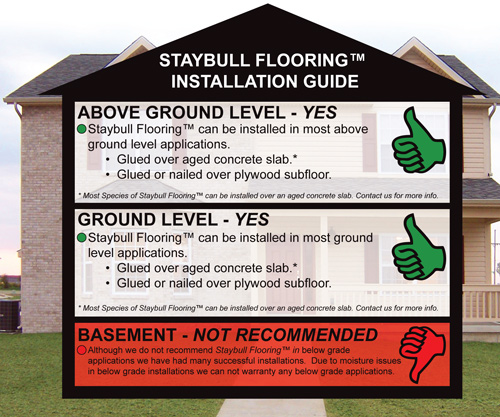
What is the best way to install Staybull flooring? There are a couple ways to install the brand of hardwood flooring made by Staybull®. All you need to do is determine which method will work best in your situation.
Nail or Staple Method
The most straightforward method, nailing or stapling your floor is relatively fast and cheap – as long as you have an acceptable substrate already in place. An acceptable substrate is one that will hold nails and staples well. Obviously, this method will not work on a concrete subfloor.
Glue Down Method
By gluing the floorboards directly to the subfloor, you get a quiet and solid-feeling surface. Because the entire surface area is glued down, this method can further enhancee the cupping and buckling resistance that Staybull® already offers. However, this method can be messy, expensive, and labor-intensive method if done improperly. Additionally, some common glues contain toxic chemicals, so you have to be careful when selecting your adhesive. We recommend urethane wood flooring adhesive. The glue down method is recommended for installing over an aged concrete slab.
For detailed instructions, check out our How-to Install Staybull Flooring® guide.